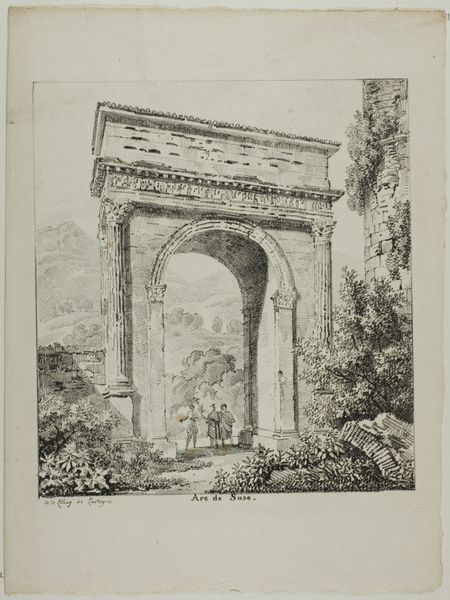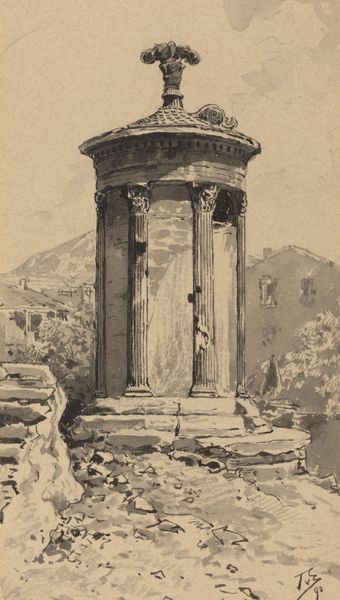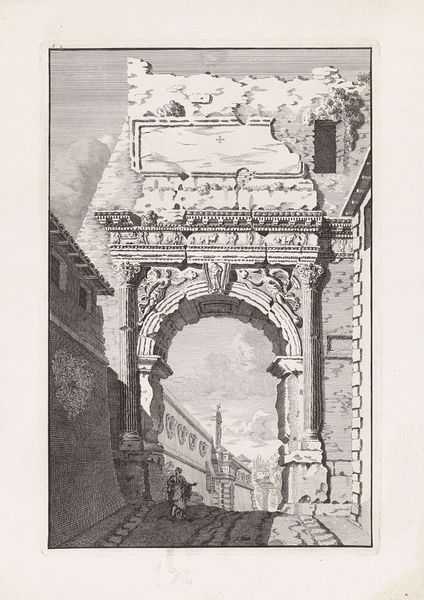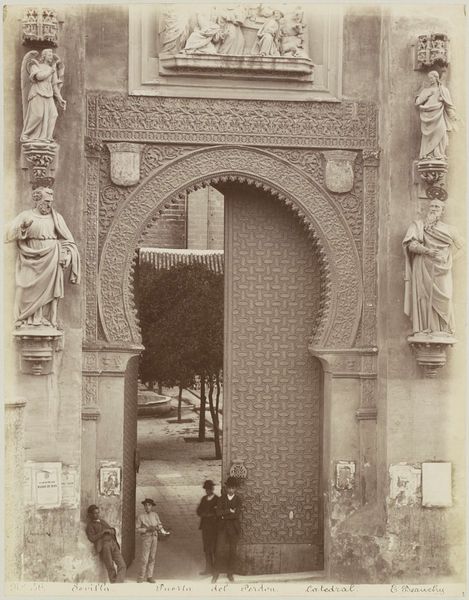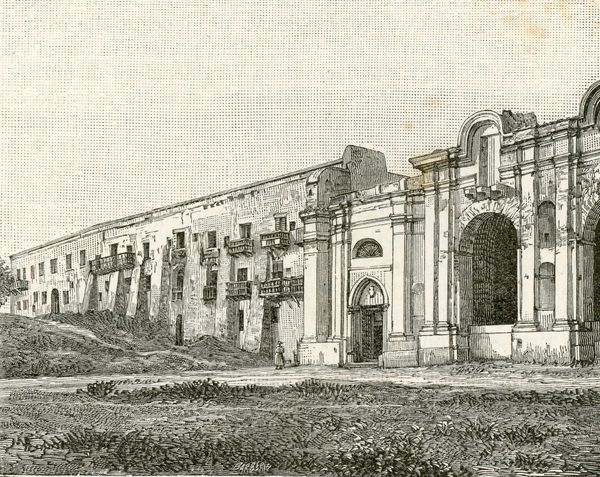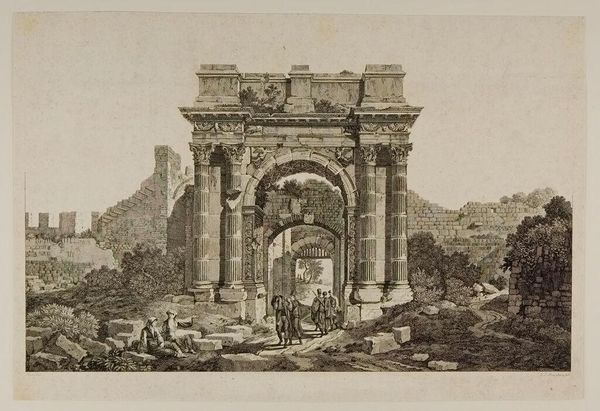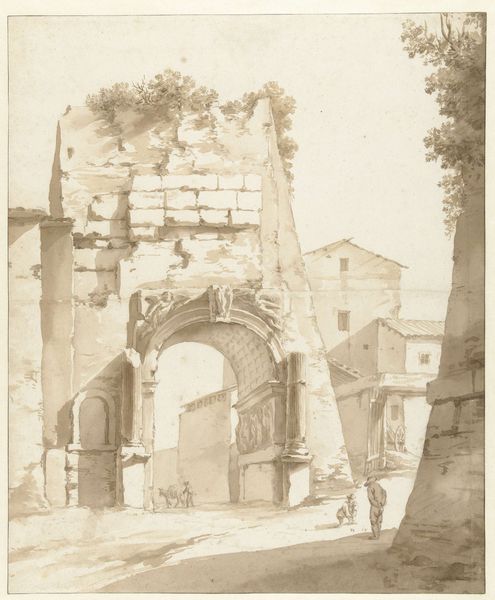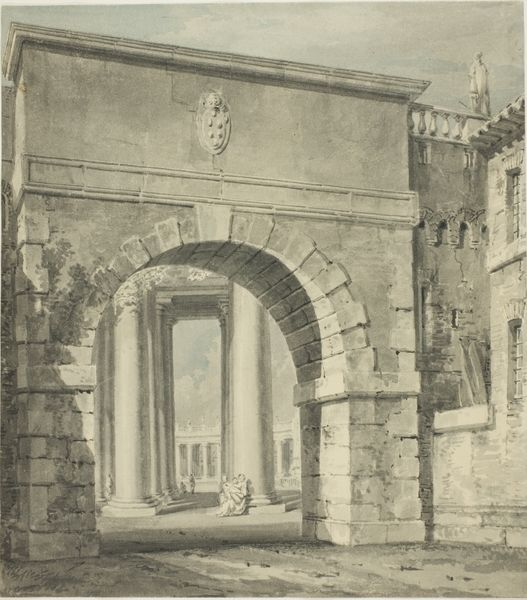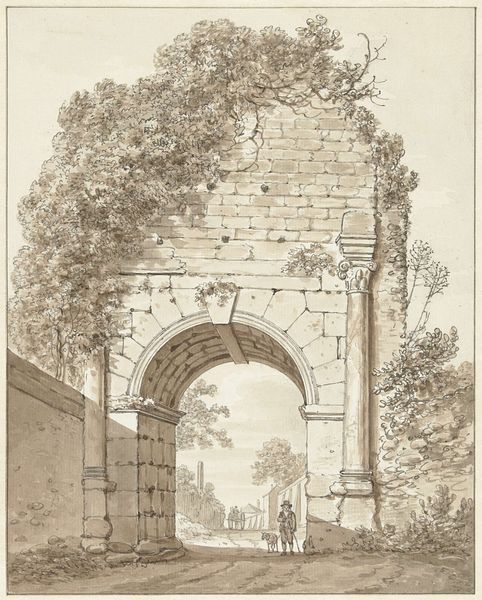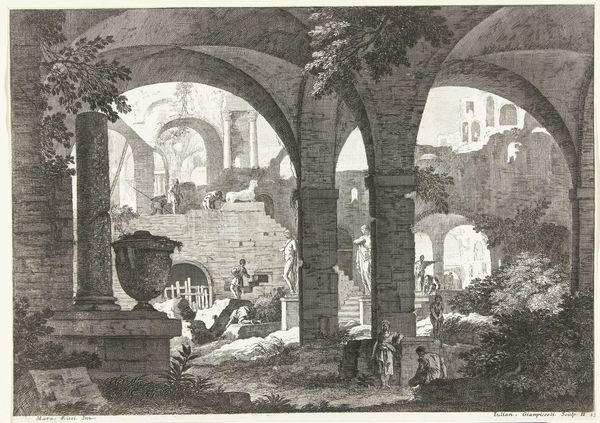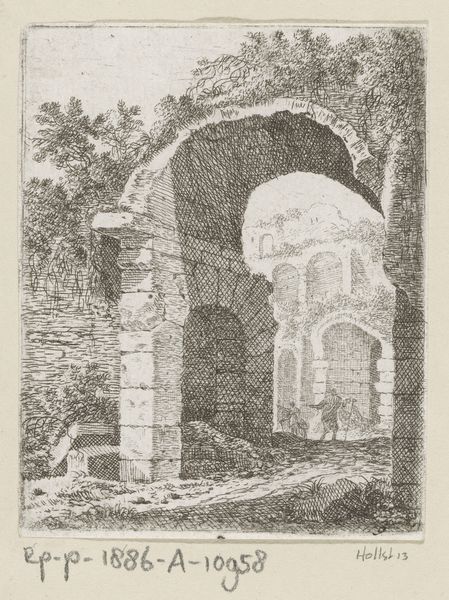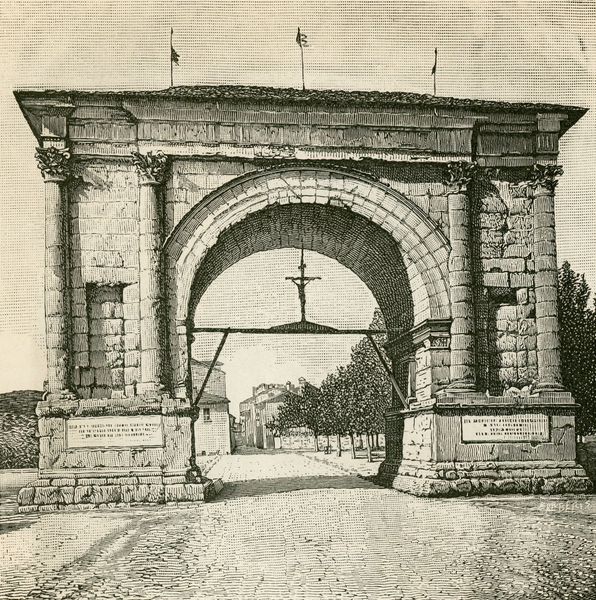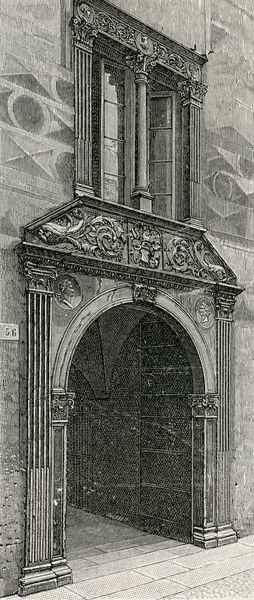
Copyright: Public domain
Curator: This pencil drawing by Giuseppe Barberis, made around 1890, is titled "Arco Di Cesare Augusto a Susa," which translates to the Arch of Caesar Augustus in Susa. My immediate impression is its delicate stillness, capturing this ancient arch against the backdrop of, what seems like, daily Italian life. What do you first notice? Editor: The sheer contrast! This imposing Roman monument dominating a contemporary cityscape sparks tension between the glory of a bygone empire and the quiet persistence of a modern town. The detailed pencil strokes render this intersection of historical eras quite striking. Curator: Absolutely. It serves as a powerful symbol, a constant reminder of the past woven into the present. I’m drawn to how Barberis uses pencil to depict not only the Arch itself, down to every stone, but also to evoke the texture of the mountains in the distance. How do you feel this artwork connects to art history and the Neoclassical movement? Editor: In the context of art history, this piece offers an excellent example of how Neoclassicism intersects with cultural preservation. We can observe the rise of conservation efforts in the late 19th century that are visually expressed through detailed documentation and admiration for classical forms. Curator: Precisely, and the Roman arch stands tall because it embodies this specific time of power. These monumental arches symbolized the height of imperial authority, visually solidifying Rome's cultural and military dominance. Its continued existence today serves as a powerful artifact and cultural artifact. Editor: Looking closer, I'm captivated by how the architectural details and inscription atop the arch serve a political purpose as well, announcing the emperor's accomplishments and reinforcing the empire’s narrative through its iconography. The drawing's accuracy echoes this function and elevates the Roman architecture into a permanent status within collective memory. Curator: Yes, that deliberate and very visual method to express this permanence, which remains potent even in Barberis’s more contemporary portrayal. This visual act of memorialization invites us to consider our present connections with past powers. What I feel, after a close observation, is a form of admiration by Barberis towards the ancient work. Editor: For me, reflecting on Barberis’ work offers a lens into how societies negotiate the complexities of honoring historical achievements while adapting to current circumstances, asking vital questions of what gets preserved, and most importantly, why.
Comments
No comments
Be the first to comment and join the conversation on the ultimate creative platform.
